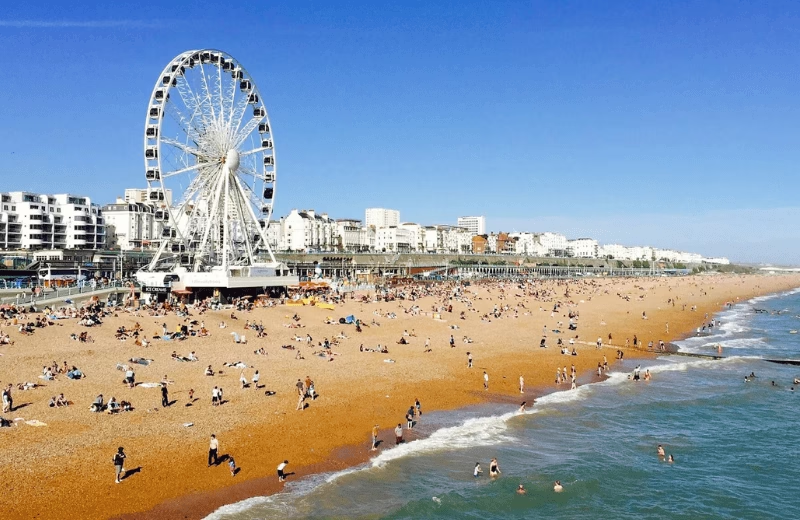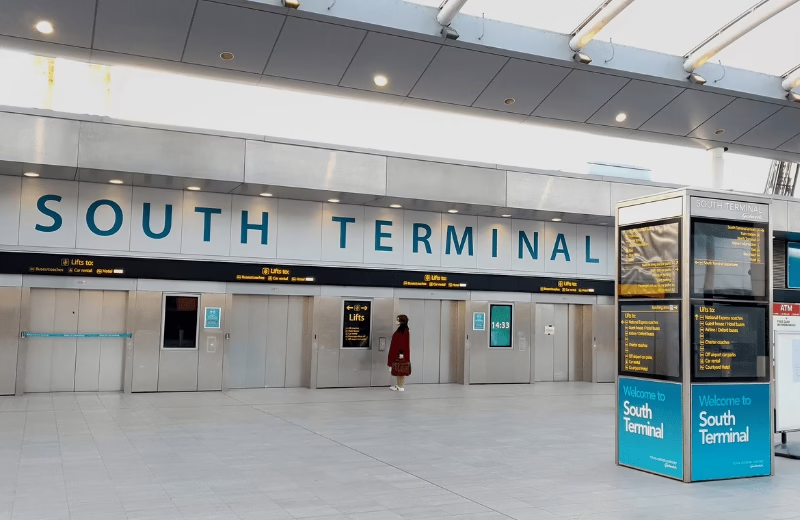Let’s face it London is iconic, but it’s not exactly easy on the wallet. From Big Ben to Borough Market, there’s no shortage of things to do, but getting from one place to another can quietly eat into your budget… unless you know the smart ways to move around.
So, what is the cheapest way to get around London without sacrificing convenience or fun? Whether you’re here for a whirlwind 3-day visit or staying longer, let’s break it down.
Why Affordable Travel in London Matters
London is full of contrasts. It’s where ancient architecture meets modern skyscrapers. It’s rich in culture but can quickly become expensive especially for tourists. Transport is often one of those overlooked costs that add up fast. Sure, grabbing a cab from the airport or zipping around the city on the Tube seems easy, but it’s not always the most cost-effective.
So how do you make the most of your London adventure without draining your wallet? The secret lies in planning, knowing the cheapest transport options, and making savvy choices with your time and money. Because let’s be honest: no one wants to spend their holiday budget on train tickets when that same money could go toward food, attractions, or souvenirs.
Oyster Card vs. Contactless: The Battle of the Tap
Before you even get on a bus or train, here’s a golden rule: never buy paper tickets.
The Oyster Card and Contactless Payment are your best friends in London. These two options work exactly the same way across all major public transport, including the Tube, buses, trams, DLR, London Overground, and most National Rail services within the city zones.
Oyster Card: Best for Tourists Without UK Bank Cards
You can pick up an Oyster Card for a £5 refundable deposit. You top it up and simply tap in and out. Bonus: Visitor Oyster Cards offer discounts on riverboats, cable cars, and even some restaurants and attractions.
Contactless Payment: Best for UK Bank Card Holders
If you have a UK-issued debit or credit card, or access to Apple Pay or Google Pay, you don’t even need to get an Oyster. Just tap and go! You’ll be charged the same fare and still benefit from daily and weekly fare caps.
Pro Tip: Both systems cap your daily spend, meaning once you hit a certain threshold, you travel free for the rest of the day in applicable zones. That’s right spend smart, travel more.
The Cheapest Way to Get Around in London: Public Transport Done Right
When it comes to budget transport, buses are unbeatable. They’re slower than the Tube but far cheaper and come with unique advantages.
Why Buses Are Your Budget Buddy
- Flat Fare: £1.75 per ride, regardless of distance
- Hopper Fare: Unlimited bus and tram journeys within 1 hour for free
- No Tap Out Needed: Just tap in when boarding
Want to see London without the price tag of a sightseeing tour? Hop on a #11 bus from Liverpool Street to Chelsea it passes landmarks like St Paul’s Cathedral, Westminster, and Trafalgar Square. Free tour, anyone?
The Tube: Faster, Pricier, But Smart with Caps
While the London Underground (aka the Tube) is faster, it’s pricier than buses. However, when used with Oyster or contactless, you won’t pay more than £8.50 per day in Zones 1–2. That gives you access to most tourist hotspots.
If you’re planning to get around London for 3 days, using a combination of the Tube and buses with your daily fare cap is the cheapest way to get around London for 3 days. You’ll get unlimited rides without stressing over individual ticket costs.
Walk It Out: Central London is More Walkable Than You Think
Don’t underestimate the power of your own two feet. Walking is not only free, but it also lets you discover hidden gems quirky alleys, pop-up cafes, and street performers you’d never spot underground.
Great Walkable Areas:
- Covent Garden to Leicester Square
- London Bridge to Borough Market
- Southbank from London Eye to Tower Bridge
You’ll be amazed at how much you can cover on foot. Plus, it’s a great way to avoid overcrowded trains during peak times.
Cycling: Two-Wheel Your Way Across Town
For the adventurous traveler, Santander Cycles (affectionately called Boris Bikes) offer a fun and cheap way to get around.
- £1.65 for a 30-minute ride
- Pick up and drop off at docking stations throughout London
- No experience needed just swipe and pedal
Cycling is perfect for short trips and exploring parks like Hyde Park, Regent’s Park, or along the Thames Path. And yes, it’s another way to get around in London cheaply while enjoying the open air.
Taxis on a Budget? Yes, But Be Smart
You’re probably thinking: Wait, aren’t taxis expensive in London? Well… sometimes, yes. But not always.
Here’s when taxis and ride-shares can be worth it:
- You’re traveling late at night when Tube lines are closed
- You’re in a group and can split the fare
- You pre-book an London airport taxi transfer (especially for Heathrow or Gatwick)
Apps like Bolt, Uber, and FreeNow often offer discounts or fixed rates. Just compare a few before booking. Still, for daily use, taxis aren’t the cheapest way to get around London but they’re a decent backup when needed.
Tourist Passes: Worth It or Wallet Drainer?
Many tourists are tempted by Travelcards, London Passes, or Visitor Oyster Cards. Here’s the lowdown:
Travelcard
- Unlimited travel in specified zones
- Only worth it if you’re traveling multiple times a day, every day
- Not as flexible as pay-as-you-go methods
Visitor Oyster Card
- Same fares as regular Oyster
- Includes discounts on some attractions and riverboat services
Unless you’re planning to travel more than 3–4 times a day, stick with Oyster or contactless. The daily cap does the heavy lifting, ensuring you never overpay.
Pro Tips to Cut Transport Costs Further
If you’re really serious about saving, these small strategies make a big difference:
1. Travel Off-Peak
Avoid commuting hours (6:30–9:30 AM and 4–7 PM). Fares are lower, and the trains are less packed. Win-win.
2. Use Transport Apps
Apps like Citymapper and TfL Go show you real-time, low-cost route options, compare modes (bus vs. Tube vs. bike), and even flag when it’s quicker to walk.
3. Pre-Book Airport Transfers
This one’s important: London’s airports (Heathrow, Gatwick, Stansted, Luton) are not in the city center. Taxis or last-minute rides can cost you big. Pre-book a ride online, or use the Tube or train with an Oyster/contactless to avoid crazy prices.
So, What’s the Final Verdict?
If you’re wondering what is the cheapest way to get around London, it’s this:
- Use an Oyster Card or contactless – no paper tickets!
- Ride the buses – flat fares, unlimited Hopper trips
- Walk or cycle – especially in Central London
- Avoid peak hours and use transport apps for smarter planning
- Pre-book airport rides and only use taxis when it truly makes sense
For tourists staying a short while, especially those looking for the cheapest way to get around London for 3 days, combining bus rides, the Tube with fare caps, a whole lot of walking, and services like My London Transfer is the way to go.
London might be one of the world’s most expensive cities but getting around it doesn’t have to be.
FAQs
Is the Oyster Card cheaper than contactless?
Nope. They cost the same. Both offer daily caps, same fares, and convenience. But the Visitor Oyster Card gives you extra tourist discounts.
What’s the cheapest way to get from Heathrow to Central London?
Take the Piccadilly Line via Oyster/contactless. It’s around £5.50 and takes just under an hour. Far cheaper than Heathrow Express or cabs.
Can I travel for free with a child?
Yes! Children under 11 travel free on buses and the Tube when accompanied by an adult using Oyster or contactless.
What is the daily cap for London travel zones?
For Zones 1–2, it’s £8.50 per day. This means no matter how many rides you take, you won’t be charged more than that when using Oyster/contactless.
Are night buses included in the fare cap?
Absolutely. Night buses operate under the same fare system and are a lifesaver for late-night explorers or those on a tight budget.
Are taxis ever cheaper than the Tube or bus?
Rarely. Taxis are generally more expensive. But in some cases—like airport transfers with a group or late-night travel—they can be cost-effective, especially if booked in advance.




